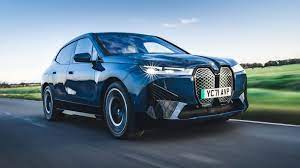China has been leading the electric vehicles (EV) manufacturing race in recent years, and now the region can expect a big EV infrastructure boost to promote the uptake of environmentally friendly vehicles. Both China and India expect to see huge investments in their EV industries, with the construction of thousands of EV charging stations, and other countries in the region are likely to follow in their footsteps as they transition away from internal combustion engine (ICE) vehicles.
A conference on EV charging infrastructure in the Asia Pacific was held in Singapore in February this year to share market insights and encourage the rollout of EV charging infrastructure across the region. The conference highlighted that by 2035 EV ownership in China is expected to reach 30 million units, meaning there is a great need for the fast role out of hundreds of thousands of charging stations over the next decade. China installed 300,000 charging ports in 2022, far outpacing U.S. EV infrastructure development. In addition, the China Passenger Car Association predicts sales of new energy cars, principally EVs, will hit 8.5 million units in 2023, to total 36 percent of all new sales.
As EV uptake in Asia has increased, the region’s EV charging infrastructure has also been rapidly expanding, with the Asia-Pacific charging station market expected to grow annually by 30.8 percent, to achieve $69.9 billion by 2029. This is higher than the global projected charging station CAGR of 26.6 percent and will contribute significantly to the global market value of almost $113.9 billion by 2033.
While China’s EV market is highly competitive, India is also rapidly growing its EV industry. The number of registered EVs in India tripled to 1.01 million from 2021 to 2022, with two and three-wheeled vehicles being the most popular. At present, EVs make up around 1 percent of the 3 million cars sold each year in India, a figure that the country hopes to increase to 30 percent by 2030, supported by government climate policies and tax breaks for consumers. Indian state refiners announced plans to establish EV charging facilities at over 22,000 fuel stations and highways by 2024. The private sector is also expected to contribute significantly to the country’s EV infrastructure.
However, the availability of charging stations across India at present remains limited. Dylan Sim, an oil market analyst at FGE, stated: “Limited charging infrastructure, low domestic EV production and high EV battery costs remain some of the key hurdles in maintaining strong EV uptake in the long run.” But there are high hopes for the country’s EV market to expand rapidly in the coming decades. Local automakers, including Tata Motors and Mahindra & Mahindra have announced investment plans and foreign companies, such as Kia and BYD, aim to roll out new EV models for the Indian market. There is also great potential for the electric truck market as India looks to decrease its reliance on foreign fossil fuels and transition to greener transport methods in the future.
Meanwhile, Shell announced this month that it plans to invest heavily in China’s EV charging infrastructure market. While the company remains committed to its oil and gas business, it is also looking to diversify into the world of renewables to make sure its operations are future-proof. Shell plans to invest between $10 billion and $15 billion in low-carbon energy technologies between 2023 and 2025, a significant chunk of which will go towards charging station infrastructure in Asia. EV sales in China reached 3.3 million in 2021, tripling from the previous year and pushing the demand for EV charging points ever higher. Unlike in several other countries, many of China’s residents live in high-rise buildings and do not have the option of installing a personal charging point.
China is producing EVs at a staggering rate, with automakers having been encouraged by government incentives for several years. Numerous new Chinese EV makers have emerged, despite the lack of well-known ICE manufacturers in the country previously. And the wide range of low-cost EV models now available on the market is highly attractive in the Asia region, offering a price point that most foreign manufacturers simply can’t match.
And the U.S. is going to have to up its game if it wants to compete, the Ford chairman, Bill Ford, stated this month: “They developed very quickly, and they developed them in large scale. And now they’re exporting them.” Ford added, “They’re not here but they’ll come here we think, at some point, we need to be ready, and we’re getting ready.” Ford’s CEO Jim Farley has previously said that Chinese EV manufacturers are its main rivals in the sector, meaning that Ford will need distinctive branding or lower costs to compete against Chinese automakers.
China has long been leading in EV production, which has encouraged a rapid rise in the regional uptake of EVs. In line with consumer interest in a shift away from ICE vehicles to EVs, public and private companies across Asia are looking to quickly develop the region’s EV infrastructure. Green policies, as well as tax breaks and other incentives, have been extremely useful in encouraging EV manufacturing and the consumer uptake of EVs, making the region highly competitive in the global EV market.

 Iran Energy News Oil, Gas, Petrochemical and Energy Field Specialized Channel
Iran Energy News Oil, Gas, Petrochemical and Energy Field Specialized Channel



